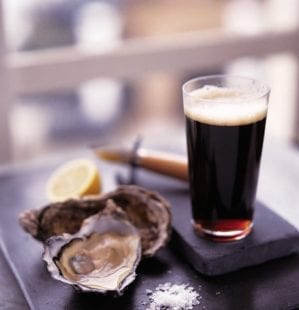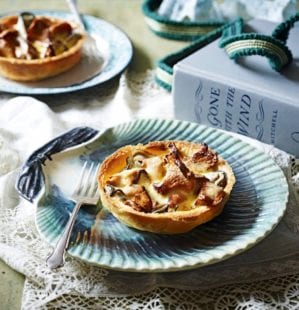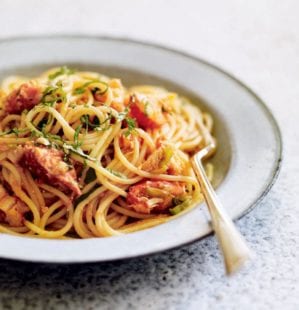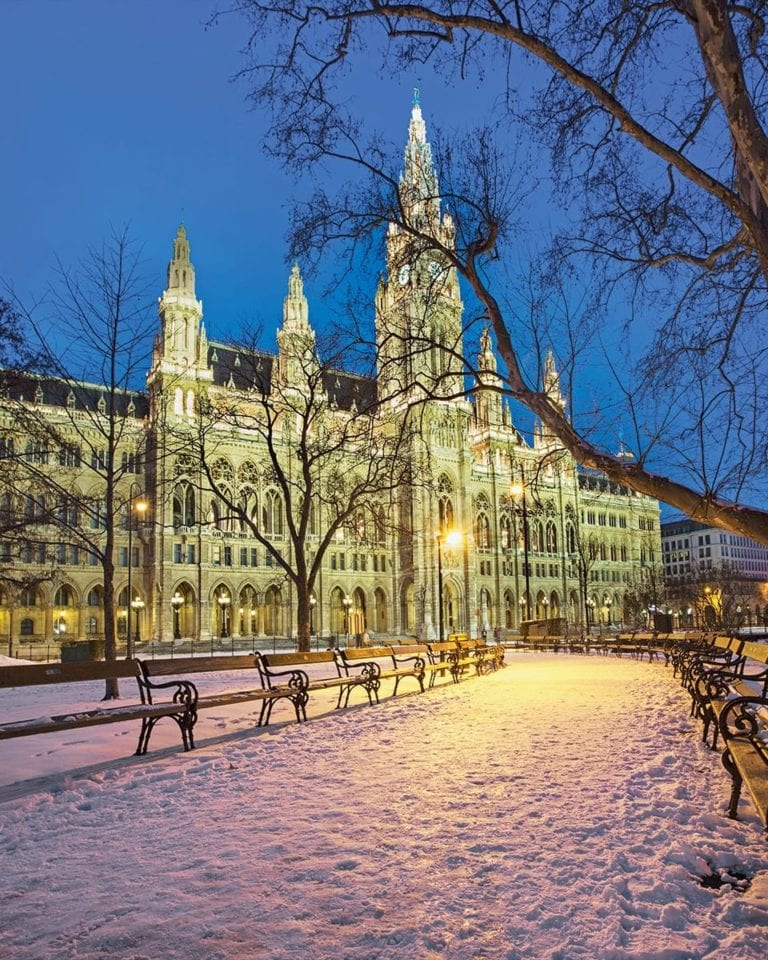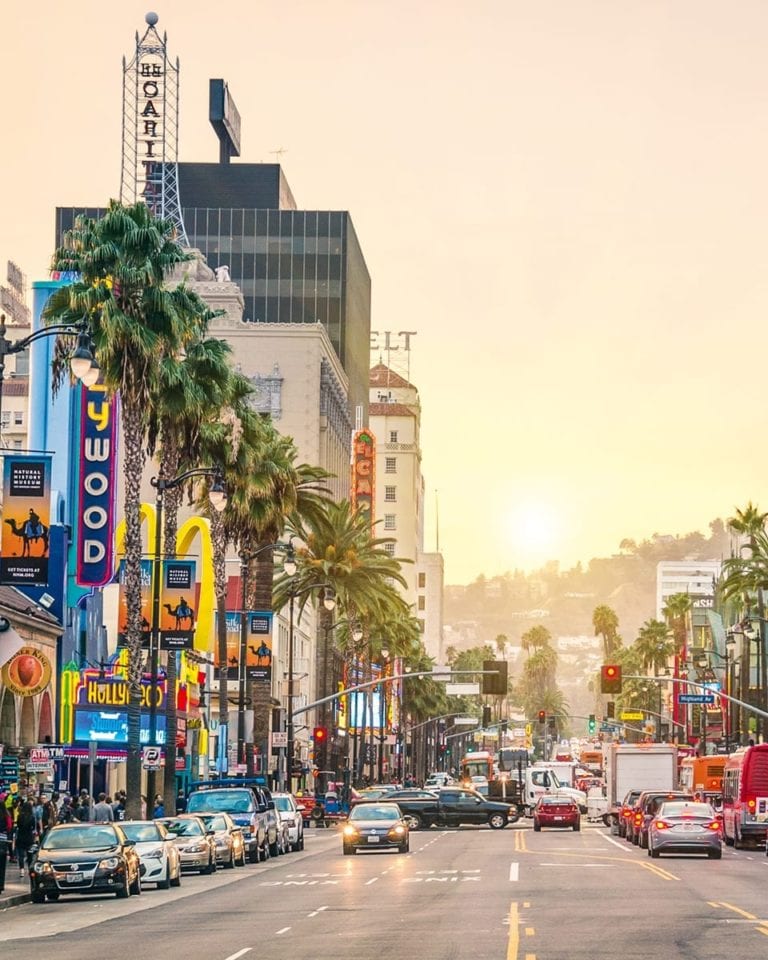Where to eat in New Brunswick, Canada
New Brunswick, on Canada’s east coast, is the historical land of the Acadians, early French settlers of North America. It’s a place of big skies, blue ocean and peaceful rivers, and those waters teem with wonderfully pure seafood.
Hugh Thompson hits the Trans-Canada Highway and tries it all, from the workaday (smelts and mackerel) to the luxurious (caviar and lobster). Around here they like to eat it fresh… Very fresh.
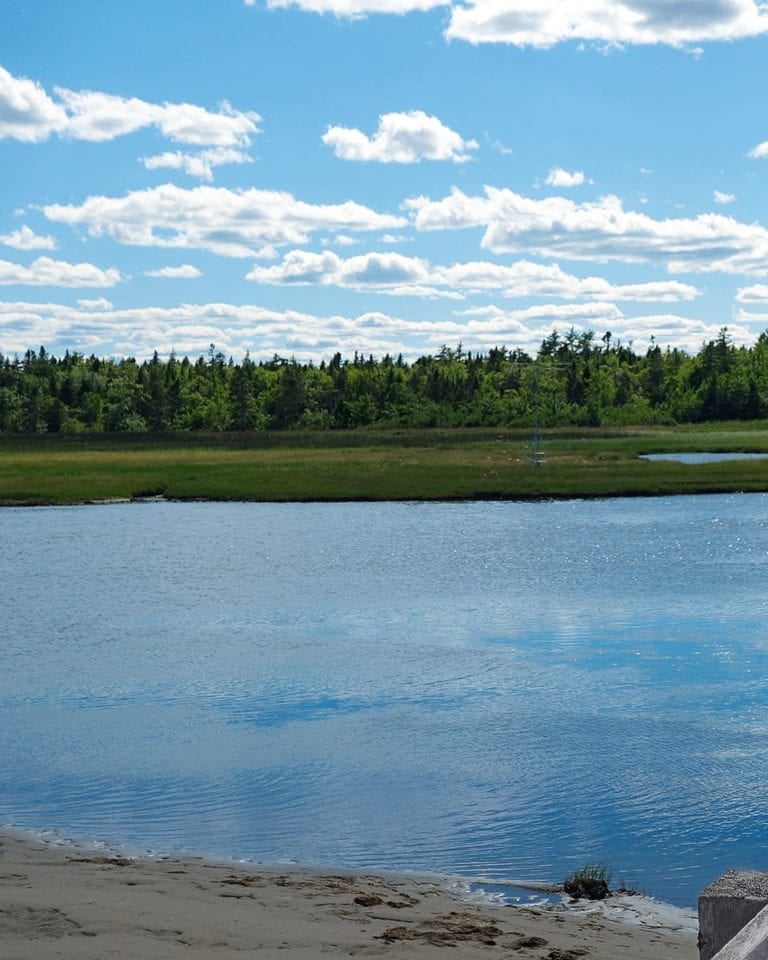
I’d come to New Brunswick to learn about Canada’s first settlers, the Acadians, and how they survived the brutal winters, but arriving in July I was pleasantly surprised to be motoring along an empty Trans-Canada Highway in a balmy 25°C with the biggest bluest skies above me.
First stop was Moncton, a busy transport hub. In the Tide & Boar microbrewery and gastro pub, I met owner Chad Steeves, who offered me a Sour Otis Strawberry Pie ale – named after his grandad and brewed with wild strawberries and pie crust. Like the beer, Tide & Boar’s menu had plenty of creative touches. Chad’s chefs do a lot of pickling, smoking and curing of fish and meat in-house. Chad set about hot smoking two silvery sea trout fillets in the 8ft smoker they brought in from Texas. Served with ‘hodge podge’ a local mix of whatever veg is in season the fish was delicious and went down well with some of Chad’s home-brewed ales.
Oysters are a big thing in New Brunswick so Chad shucked a few local ones for me and explained about oyster ‘terroir’. Blue pearl oysters from the muddy Northumberland strait, were roundish and tasted sweet and earthy; oysters from the Bay of Fundy, washed by the strong Pacific tides, were bigger and more saline.

The next day chef Pierre Richard, who creates exquisite dishes at one of Moncton’s smartest restaurants Little Louis’ Oyster Bar, took me to see oyster farmer Donald Caissie. Donald has 2 million blue pearl oysters in 800 cages bobbing just below the surface of the sea. We helped flip over some of the heavy cages to let the sunlight kill off algae and mussels growing on the shells, giving the oysters the clean look loved by restaurants. We only flipped over a couple and it was tiring. Donald sometimes has to do them all on his own!
Pierre and Donald talked about how foraging in the sea and on the seashore helped keep the Acadians alive. It’s part of their history and still a popular activity – digging for clams or fishing is what they like to do with their family at the weekends. As if to prove it, Donald brought out fishing rods to troll for mackerel on the way back.
On shore, in the car park, Pierre opened up the boot of his car for an impromptu tailgate picnic. He deftly filleted a couple of the mackerel we’d caught and, with a splash of lemon juice and a scattering of pickled radishes and sea salads, he’d soon created a beautiful plate of food. The mackerel was so tender and fresh-tasting – it wasn’t like an oily fish at all. Donald opened a few of the oysters and Pierre added a dash of cocktail sauce spiked with kimchi – juicy, salty, with a sweet note and then a hit of heat. All in all it was a beautiful feast but I did find myself longing for something cooked…
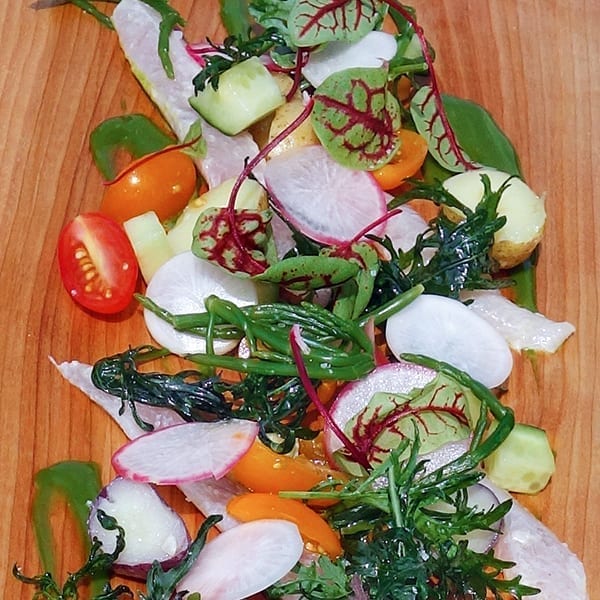
From Moncton it’s a two-hour drive south to the port city of St John, near where the St John river empties out into the Bay of Fundy. The landscape became more rolling and lush and there was the unmistakeable smell of dairy farms in the air. I stopped for a break at Kredl’s Corner market. The place was busy with customers and filled with produce from local farms, including haskap berries – like a large, elongated blueberry with a sweet-tart taste. I cooled off with a large dollop of rich haskap ice cream, trying both of the local specialities in one fell scoop.
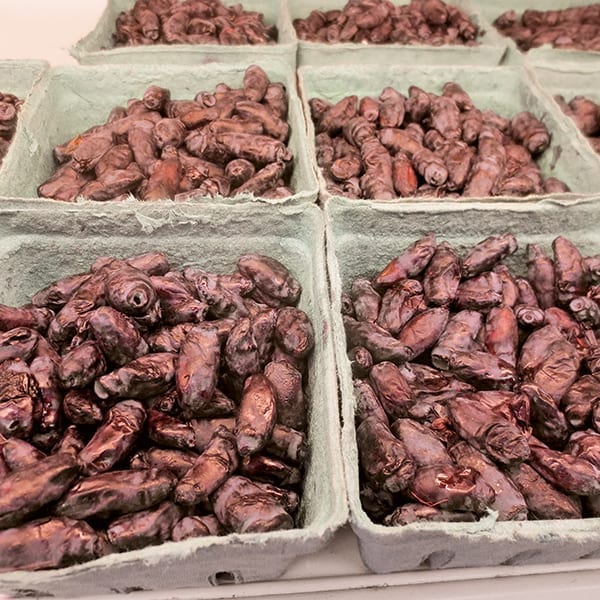
Living the high life
Before reaching St John, I stopped at leafy Carter’s Point where I met Cornel Ceapa and his wife Dorina who run the Acadian Sturgeon & Caviar Company, one of the last legal wild sturgeon caviar fisheries in the world. Cornel has a PhD on sturgeon ecology and knows everything about these fish that swam with dinosaurs over 200 million years ago. He’s incredibly passionate about his project and the fish. As well as running a sustainable wild fishery, he farms sturgeon and helps other countries to restock their waters.
After a quick tour of the facility, Cornel treated me to a fishy feast that included a bronzed, barbecued 1.2m sturgeon. Sturgeon meat is dense, oily and packed with nutrients – perfect for smoking. Over the next two hours I tried sturgeon raw, smoked, barbecued and many more ways, then finished with a prosecco syllabub topped with caviar. Cornel uses every part of the fish from bones to skin to gall bladders – but the caviar is the prize.

When I told Cornel I didn’t see what the fuss was about caviar, he replied: “Listen, life is beautiful; you have things to celebrate in life. Caviar is a celebration just like opening a bottle of champagne, something to be shared with the people you love. It’s not for every day, it’s expensive but it’s special.”
We tried the farmed and wild caviar in the sort of quantities usually only available to Russian oligarchs. Cornel demonstrated the ritual. You make a loose fist with your hand and deposit a clump of eggs on the top near the base of the thumb. Then, after admiring the glistening baubles, you slurp them into your mouth and feel the eggs dissolving on your tongue as the buttery briny flavours develop. Next, you cleanse the palate with champagne or vodka – and repeat as many times as your wallet (and your liver) will allow. After a good few attempts, I was officially a slightly slurring fan.
The reversing rapids
St John is strategically positioned with the river on one side and the Bay of Fundy on the other. The tidal swell in the bay is so great it pushes the St John river back upstream, creating the famous Reversing Rapids. I strolled round St John City Market, which dates back to 1876 – it claims to be the oldest in North America. It’s a good spot to pick up a lobster, snow crab or a loaf of sourdough. The market’s high-beamed roof is like an upturned boat, testament to the city’s shipbuilding heritage. Walking around, it was noticeable how shopkeepers instantly switched from French to English when necessary, saving my rusty French blushes.
As the evening drew on, the promenades on the river filled with people and the waters started to churn as the tide changed direction. Music drifted out of restaurants and the bars quickly filled up. At St John Ale House chef and co-owner Jesse Vergen introduced himself with a whiskey sour cocktail made with wild strawberries (did I mention that Acadians are very hospitable). Jesse has a small farm just outside town where he grows vegetables and herbs for the restaurant (everyone I met in New Brunswick had at least two jobs), and if he’s not cooking or farming, he’s hunting, fishing or foraging. Jesse brought over devilled quahog clams (hurrah, they’re cooked!), followed by chunky lobster bisque with lovage, some sticky pulled pork (yum) with pickled fiddlehead ferns, and I finished with bread and butter pudding with haskap berries. Jesse’s food was satisfying pub grub, but with many sophisticated touches.
On the acadian trail
The next day I headed back north to Shediac (where a lot of New Brunswick lobsters are landed) to follow the Acadian Trail west along the coast. Driven out from their lands, the Acadians settled on the less fertile land by the sea where they wouldn’t be disturbed. The landscape is very flat, and as you skim across rivers via low bridges between frequent sightings of the sea, the boundaries between land and water seem to melt away.
My next stop was the Pays de la Sagouine, Bouctouche. It’s a small historical theme park inspired by the 1971 novel by Antonine Maillet, La Sagouine (The Washerwoman), which describes Acadian life. The book’s popularity helped resurrect Acadian pride in their history and started a movement to protect their culture. The park is a reproduction of a Prohibition-era fishing village set on an island, reached by a snaking walkway.
In the restaurant I tried some Acadian specialities including poutine rapée which holds a place dear in every Acadian’s heart. This is a glutinous ball of grated and mashed potato encasing a centre of salted ham, which is eaten sprinkled with brown sugar. I found it a claggy mix of plain, salty and sweet, the sugar gritty against my teeth but the Acadians chomped it up with gusto. It was explained to me that sugar was added to Acadian food as it needed to be high-calorie to fuel manual work in such a harsh environment – poutine rapée was the perfect energy ball.
Outside, a band was playing lively banjo and fiddle music to a crowd of families (Acadians were known for their partying – and still are – life was tough and short, so enjoy it while you can). With music ringing in my ears and poutine rapée sitting heavily in my stomach, I continued heading west.
Caraquet is a small fishing town on a finger of land that pushes out into the Gulf of St Lawrence. I checked into Hotel Paulin, a pretty red clapboard seaside inn with the Acadian flag flying proudly from its flagpole.

The next day Karen Mersereau, Hotel Paulin’s co-owner and chef, took me foraging to find something for the night’s supper. We jumped into kayaks and were soon sliding across the shallows to nearby sand bars. Our guide Frédéric showed us the tell-tale bubbles of a clam blow hole. We dug up large sand clams (good for chowder) as well as better tasting razor clams and grey-blue palourde clams. Next, we dragged our kayaks onto the beach and headed to the marshy coastline. Karen was looking for goose tongues (they’re long and thin… like goose tongues). Within 10 minutes we had filled two trugs with the sea greens, so we stowed our finds and paddled back.

Hungry from our exertions, we stopped at Caraquet’s lobster van La Homard Mobile for a lobster roll and chips. It cost CA$13.95 (£8) for half a lobster in a soft bun with salad and mayo and fries. No gimmicks, no spicy sauces, just meaty chunks of sweet lobster. Simple perfection.
Karen went to get some meat for dinner, while I visited the Fils du Roy distillery. I recommend you take a tour of the distillery with the charismatic Sebastien – he’s a creative Willie Wonka of alcohol and he was inspired to make a lot his beers and spirits by Acadian tales.
That night, back at the hotel, Karen served pâté made from lobster tomalley (liver) – powerful in a way the tailmeat isn’t. Next up was a platter of spanking fresh fruits de mer (that we’d caught that morning!), then a perfectly cooked lamb chop with earthy chanterelle mash and salty goose tongues. I finished with tarte au sucre – a classic Acadian pud.
The next day I dropped into the Historic Acadian Village just outside Caraquet. It’s a large, pleasant site in the countryside with genuine 18th century wooden buildings where you can get a feeling for how the Acadians lived, farmed and cooked in the 18th century (and you can take part in an Acadian cookery class).
Returning to the airport, I made a last stop at Kouchibouguac National Park for a cooling paddle at sandy Kelly’s beach, which is reached by a 1km boardwalk across the salt marshes. The park is dotted with campsites and you can hunt for clams, explore walking trails or join in all sorts of activities. As I took a moment to enjoy the pristine wilderness of marshes, forests, rivers and lagoons, I was struck by how this is what it must have been like when the Acadians first settled here.
Subscribe to our magazine
Food stories, skills and tested recipes, straight to your door... Enjoy 5 issues for just £5 with our special introductory offer.
Subscribe
Unleash your inner chef
Looking for inspiration? Receive the latest recipes with our newsletter
